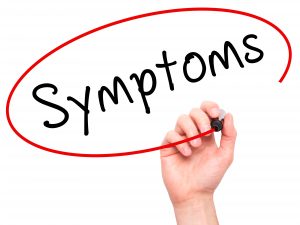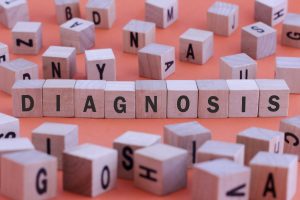Paroxysmal Sympathetic Hyperactivity (previously referred to as dysautonomia, autonomic dysfunction syndrome, paroxysmal autonomic instability with dystonia, or sympathetic storming) is due to loss of regulation of autonomic activity. It is caused by injury to the hypothalamus and those cortical and subcortical areas that influence the activity of the hypothalamus, resulting in excessive catecholamine and acetylcholine release. The features typically present within days of the brain injury, but may last for several months.
Manifestations of Paroxysmal Sympathetic Hyperactivity (PSH) include fluctuating patterns of:
- Hypertension, or occasionally hypotension.
- Fever, or occasionally subnormal temperature.
- Excessive sweating (diaphoresis).
- Tachycardia > 130/min, and possibly arrhythmia or rarely myocardial infarction.
- Tachypnoea.
- Pupillary dilation.
- Extensor/decerebrate posturing or dystonia, which may lead to hypermetabolic state that also affects temperature control.
- It may also be associated with SIADH (syndrome of inappropriate ADH release).
Differential Diagnoses to consider:
- Fever due to sepsis – consider meningitis/encephalitis in particular.
- Withdrawal syndromes/delirium tremens.
- Medication related neuroleptic malignant syndrome, a rare side effect neuroleptic drugs. Differentiating features include rigidity, worsening confusion or coma.
- Serotonin syndrome (condition due to elevated levels of serotonin, usually due to ingestion of specific drugs, principally selective serotonin reuptake inhibitors (SSRI antidepressants). Differentiating features include agitation, confusion, diarrhoea, tremor, myoclonus, rigidity, seizures, drowsiness, hallucinations, and coma.
- Malignant hyperthermia, a genetic condition triggered by some anesthetic drugs in post-surgical patients, resulting in intense muscle contraction that produces great heat and a dangerously high temperature.
- Thyroid storm a potentially life-threatening complication of hyperthyroidism. Presence of irregular heartbeat may be a distinguishing feature. It is unlikely to co-exist unless triggered by associated injury to the thyroid gland.
- Autonomic dysreflexia due to spinal cord injury (characterised by the sudden onset of severe persistent high blood pressure, throbbing headaches, profuse sweating, nasal stuffiness, flushing of the skin above the level of the lesion, bradycardia, anxiety, and sometimes by cognitive impairment).
- Hydrocephalus.
Initial Investigations to identify causes, complications or differentials  include:
include:
- ECG.
- FBC (full blood count), blood cultures & CRP (C reactive protein) to exclude infection.
- Sputum and urine cultures if considering sepsis.
- Thyroid function tests (thyroxine & TSH).
- Serum creatine kinase and troponin levels to exclude myocardial infarction, neuroleptic malignant syndrome, and serotonin syndrome.
- Catecholamine levels can confirm PSH if there is clinical doubt.
- Consider MRI/CT to exclude hydrocephalus/encephalitis.
- Consider lumbar puncture to exclude meningitis.
Management of PSH:
- Features of PSH can be due to the release of a wide variety of neurotransmitters and management may require a wide variation in medications including:
- Pregabalin (GABA analogue), propranolol (beta blocker) or clonidine (alpha blocker) may control agitation, hypertension and tachycardia. A history of asthma may be a contraindication to beta blockers. Clonidine may cause sedation.
- Bromocriptine (dopamine agonist) may control hyperthermia and diaphoresis.
- Dantrolene is used for extensor posturing.
- Other medications that may be of benefit include morphine, naltrexone, gabapentin or chlorpromazine.